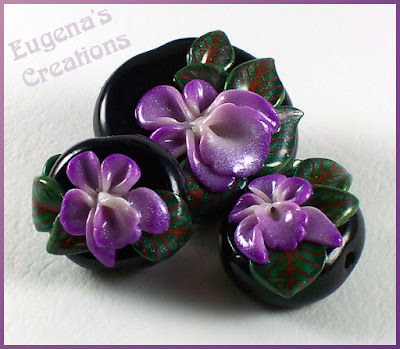Crafts Shows Equipment
I met a few wonderful people in my class in North Carolina, and among them – Marley Beers. Marley and her husband Jetze have lots of experience in doing craft shows and are very generous about sharing it. Marley suggested I post this information in my blog for all interested people.
Thank you, Marley!
Outdoor tent:Trimline, made by the Flourish Company, www.flourish.com. Great product, great people to work with, very open and honest. By far superior considering this combination of characteristics.
Indoor frame:Also Flourish Company, however their indoor frame is quite heavy and not telescoping, thus harder to set up. A lighter (aluminum) indoor frame is made by Georgia Expo. They have 2 different diameter frames (1.5 and 2 inch?) and offer the option of telescoping corner poles. This is easier to transport and to set up. Also, the horizontal tubing for the top of the frame can be made telescoping, which can be important since no shows guarantee exact booth dimensions. And, sometimes one may rent a larger space than just 10 x 10, so just one extra upright and a horizontal extension will do the trick. (To clarify this, come and see our frame.) Georgia Expo web site: www.georgiaexpo.com. In case you decide for a Trimline outdoor tent, you can use that frame also as your indoor frame instead of buying a separate one. It is just a little bit heavy and takes a second person to help with the setup.
Cash register:Certainly in the beginning not a must. However, if business goes well it is important to have sales and inventory records without having to rely on written notes and/or copies of sales slips. An important issue is the availability of electricity. Indoor shows always offer it for a fee and you need it for lights anyway. But many outdoor shows do not offer it or it is limited to some booth locations. Therefore, a cash register that has a dual mode (110 Volts or battery) is the best choice. Only 2 companies have reliable models, Royal and Swintec. Swintec is our preference. It is a sturdy metal case and has a low profile. It is also simple to operate, however both brands offer limited options in terms of what you can do with the cash register. Nevertheless, we are very much into semi-automated record-keeping and the Swintec has become our base for inventory and sales information. The model is SW20 and the web site is www.swintec.com/.
Credit card equipment:Taking credit cards (mostly Visa, MasterCard and Discover) is a MUST. Here also, don't jump into the more expensive hi-tech situation until your sales volume justifies electronic wireless equipment. A good and inexpensive way to start is with the old-fashioned knuckle buster, the slide in which you place the credit card and a blank paper slip, and then complete the slip manually with all pertinent information. This manner requires after-sales phone transmittal to your service provider and, since it is after the sales, does not give you acceptance authorization before the transaction is complete. This is the risk of a manual system but it is also the cheapest way. You still can do pre-approval over the phone but that takes time and is often awkward in front of the customer. Of course you can still protect yourself a little bit by requiring good identification and record phone numbers and driver license information. A good company to work with this way is TeaMac Inc. in Pennsylvania. They specialize in services to artisans and have an easy application process. Web site is www.teamacinc.com.
The other option is to jump high and go for wireless and battery-operated equipment. This has become a highly-competitive market and it is worth shopping around for the best deal. Many companies offer (mostly) free equipment. The trick is to find a provider with low discount percentages and reasonable additional fees and no or low minimum monthly charges. It may worth your while to talk to your regular bank to see what they can offer. In terms of equipment, there are many options ranging in purchase price from $350 to $1250. The most popular machines are made by Nurit and by Way Systems. Our equipment is the Way Systems cell phone based MTT 1510 with a small battery-operated printer. It works just about everywhere and has been almost 100% reliable. The reception and therefore the connection to the wireless network is usually better than that of other equipment. We recommend this system over anything else. Again, you just have to find the best and fairest merchant service provider and get free or almost free equipment without lengthy and expensive contracts. For Way Systems equipment information you may want to visit www.waysystems.com.





















